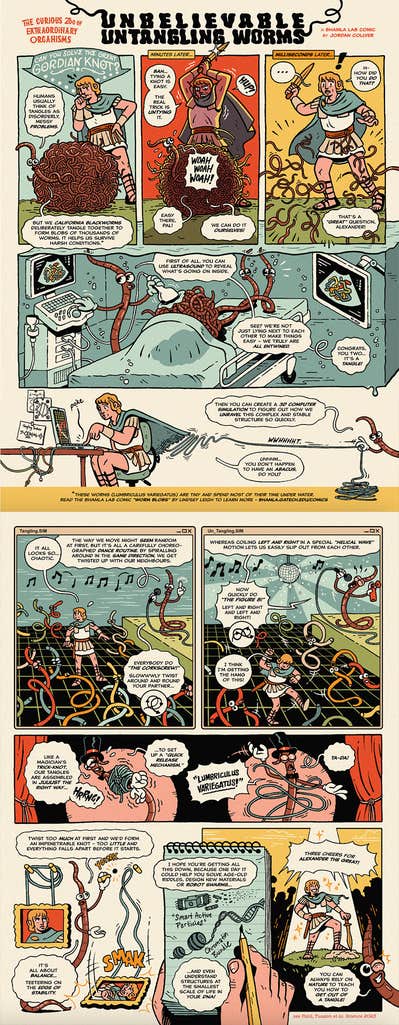Living matter can get all tangled up. Biological filaments and fibers, critical building blocks of complex matter, may braid and wind around one another like tango performers engaged in a dance. Think of chromosomal DNA. Or the root networks of plants. And have you ever seen a writhing blob of 50,000 worms?
Given their tricky geometry, how to quickly unravel such biological tangles has posed a historically knotty problem for scientists. To try to solve this problem, researchers in the Bhamla Lab, a biomolecular engineering lab at Georgia Institute of Technology led by Saad Bhamla, conducted an experimental and theoretical study. They enlisted California blackworms, which can get so tangled up with each other, over a span of minutes, it can be hard to see how they would come apart. And yet, if they sense danger, they can untangle themselves in just milliseconds.
The comic below, created by artist Jordan Collver, describes the lab’s findings, which were recently published in a paper in Science, “Ultrafast reversible self-assembly of living tangled matter.”

Jordan Collver is an illustrator and research communicator using visual narratives in comics to explore themes of science, nature, and belief. He is an associate lecturer in science communication at The University of the West of England and the artist for the Eisner-nominated comic Hocus Pocus: Magic, Mystery & The Mind. His work has been featured in The London Natural History Museum, The Journal of Science Communication, Slate, Physics World, Science for the People, Skeptical Inquirer, The Nib, and several comic anthologies. He sounds Canadian but lives in Bristol, UK. You can find him at @JordanCollver and https://jordancollver.myportfolio.com/





























